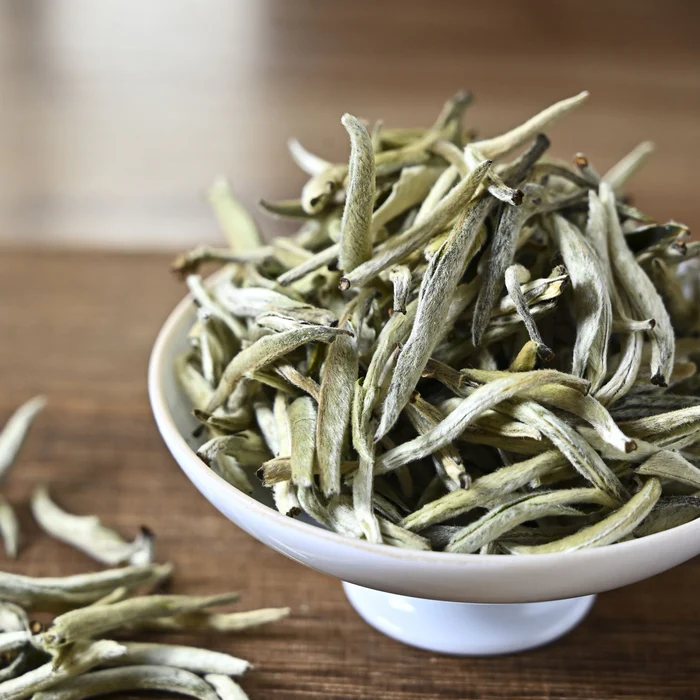
White tea stands apart as one of the rarest and least processed forms of true tea (Camellia sinensis). Harvested only for its youngest, unopened buds and tender leaves, this delicate brew gets its name from the fine, silvery-white hairs (pekoe) that cover the buds before they blossom.
Because it undergoes minimal processing (only withering and drying), White Tea retains the highest concentration of antioxidants among all teas, making it a powerful natural elixir. It is characterized by its light, subtly sweet, and floral flavor profile.

Top Science-Backed White Tea Benefits
While delicate in flavor, White Tea is packed with health benefits, primarily driven by its abundance of polyphenols, particularly EGCG (Epigallocatechin Gallate), and the amino acid L-theanine.
- Antioxidant Powerhouse: White tea is exceptionally high in antioxidants, which combat free radicals and protect cells from oxidative stress. This action helps reduce inflammation and lowers the risk of chronic diseases.
- Promotes Youthful Skin and Anti-Aging: The strong antioxidants help protect the skin from UV damage and environmental pollutants. White tea extract is often used in skincare to help maintain the skin’s natural collagen and elastin, promoting a more youthful complexion.
- Supports Cardiovascular Health: The polyphenols in white tea can help relax blood vessels, lower “bad” LDL cholesterol, and improve blood circulation, which significantly contributes to reducing the risk of heart disease.
- Aids in Weight Loss: Like green tea, White Tea contains catechins (EGCG) and caffeine that work together to slightly boost metabolism and stimulate the breakdown of fat cells, supporting weight management efforts.
- Enhances Focus and Calmness: White tea contains the highest concentration of L-theanine among true teas. This amino acid promotes a state of relaxed awareness, improving focus and reducing stress and anxiety without causing drowsiness.
Popular Types of White Tea
The quality and type of White Tea are defined by the specific plucking style and geographic origin, primarily from the Fujian province of China.
| White Tea Type | Chinese Name | Plucking Standard | Flavor Profile |
| Silver Needle | Bai Hao Yinzhen | Only the unopened bud (tip) | Most delicate. Subtle sweetness, hints of honey and hay, silky mouthfeel. |
| White Peony | Bai Mu Dan | One bud and two young leaves | Slightly fuller and bolder than Silver Needle. Notes of fresh hay, wood, and mild fruitiness. |
| Shou Mei | Shou Mei | Later plucked leaves and some buds | Darker and more robust flavor. Fruity, slightly sweet, and often aged for flavor. |
The Art of Brewing White Tea Perfectly
Due to its delicate nature, brewing White Tea requires careful attention to temperature to avoid bitterness and maximize its subtle flavor.
| Brewing Element | Standard Recommendation |
| Water Temperature | 170∘F to 185∘F (77∘C to 85∘C) |
| Tea-to-Water Ratio | 2 teaspoons of leaves per 8 ounces of water (White Tea is voluminous) |
| Steeping Time | 2 to 5 minutes |
| Re-steeping | High-quality white teas can be re-steeped 3–5 times, allowing the flavors to change subtly with each infusion. |
A Simple Sip for a Healthier Life
As the least processed beverage from the Camellia sinensis plant, White Tea delivers maximum health benefits with minimal caffeine and an exceptionally refined taste. It is an ideal choice for anyone seeking a gentle, antioxidant-rich addition to their daily wellness routine.





